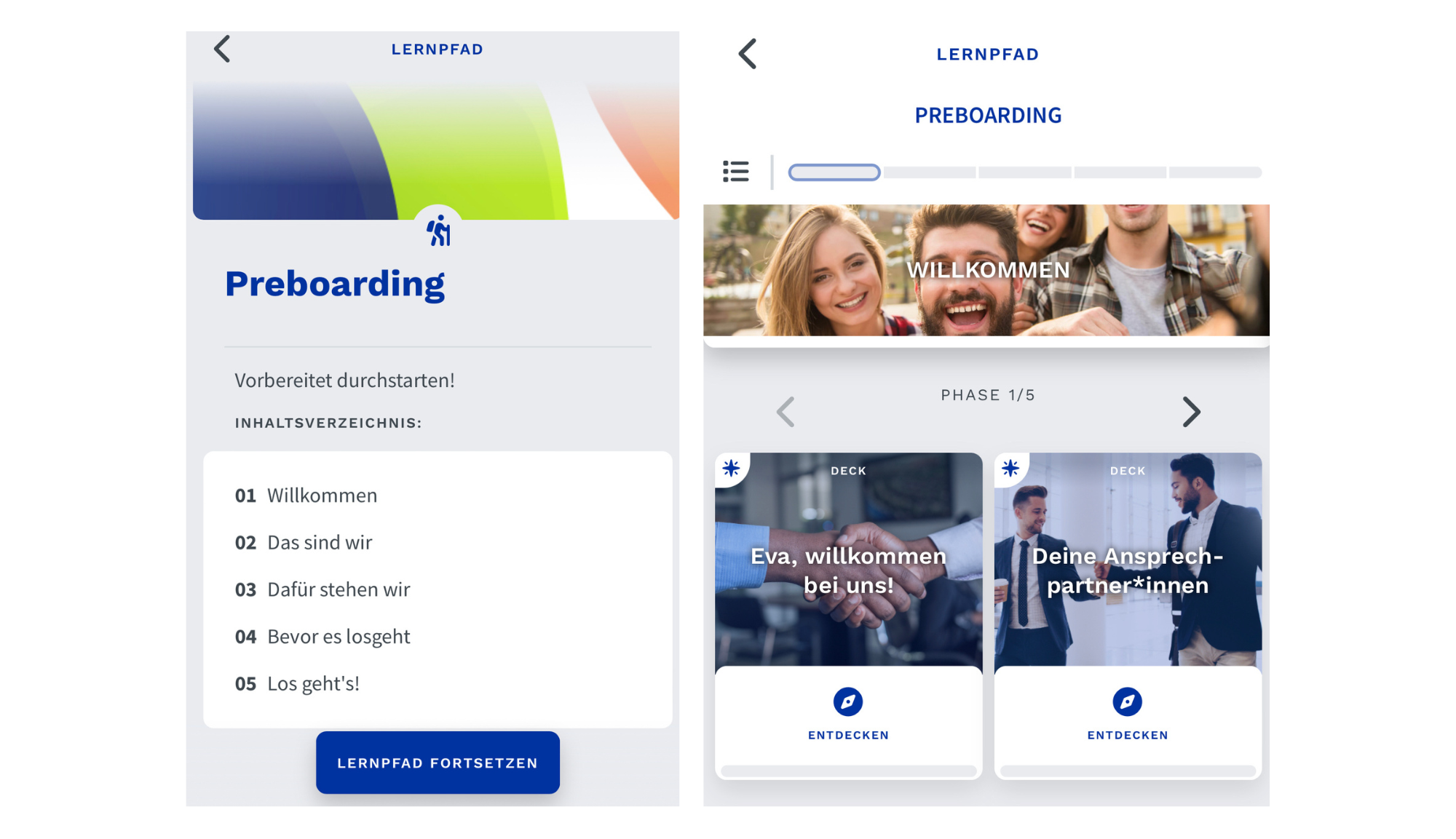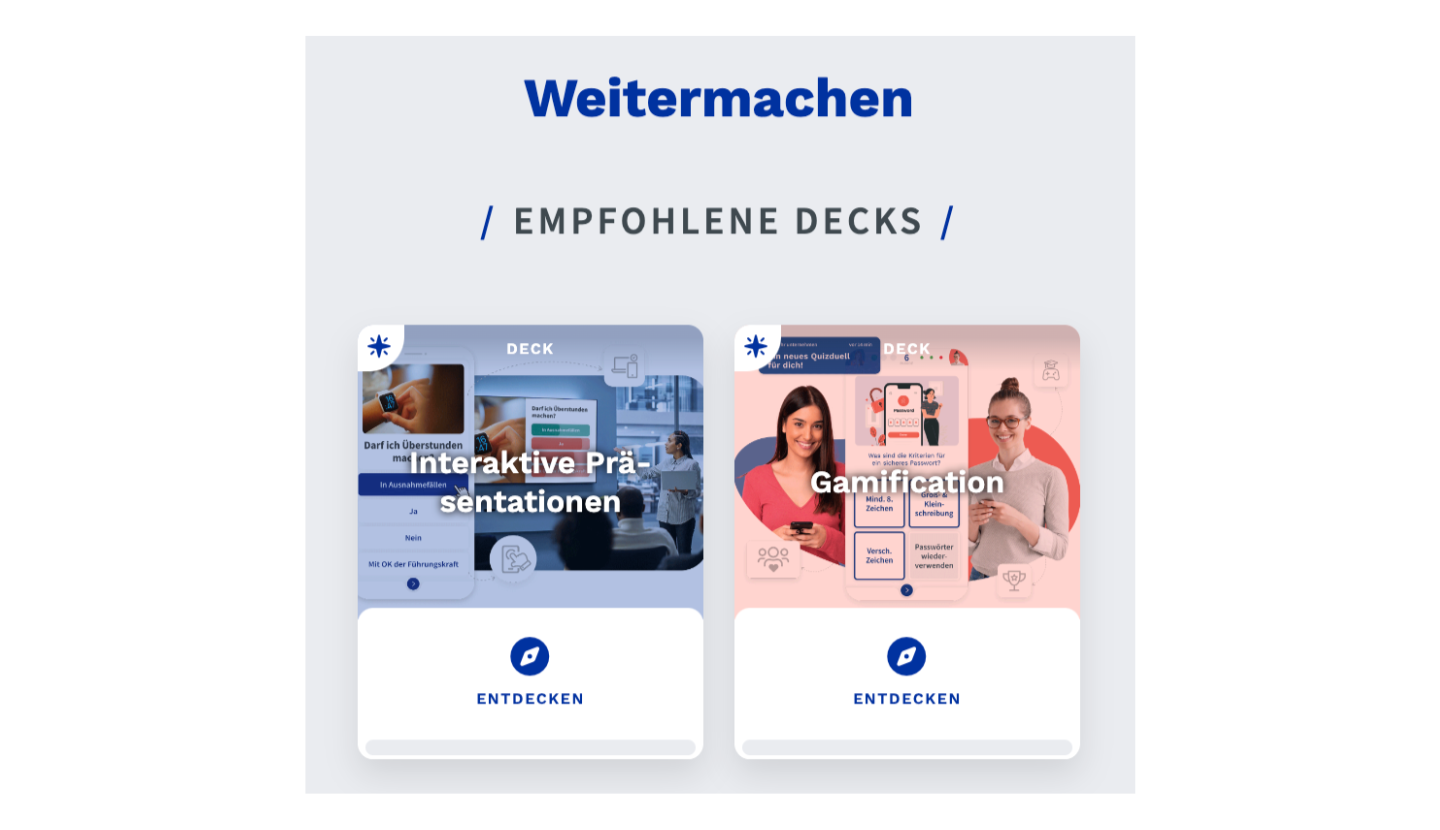When setting up your library, you can decide whether your learners should follow a predefined structure or whether they can choose how they want to proceed according to their own interests.
Phases in the preboarding process that build on each other: Welcome, This is us, What we stand for, Before we start, Let's go
Successive phases in the onboarding process: 1st working week, 2nd working week, 2nd month
Learning content that builds on each other: from basics to expert knowledge
Then a so-called learning path, which consists of several phases, is ideal. Your learners are guided through the individual learning content in a structured way. You can also use an activation condition to control when learners can access the individual content.
Example:
Library structure Preboarding - learning path with phases:

Pro tip:
Activation can take place after a certain learning progress, after a certain date, starting from a certain start date or after a certain period of time after registration.
More information:
How do I add an activation requirement to a deck?
Then a non-linear structure of your content is recommended. This makes sense if content does not have a specific order and each deck can stand on its own. It also promotes learner autonomy, i.e. learners take responsibility for their learning process by selecting the content themselves.
After completing a deck, learners return to the library and can decide for themselves what they want to continue with.
Alternatively, a recommended route can be suggested with deck recommendations, but this does not have to be followed.
Example:
Deck recommendations:

Previous chapter: Break down the learning content
Next chapter: Plan the learning content
More information: